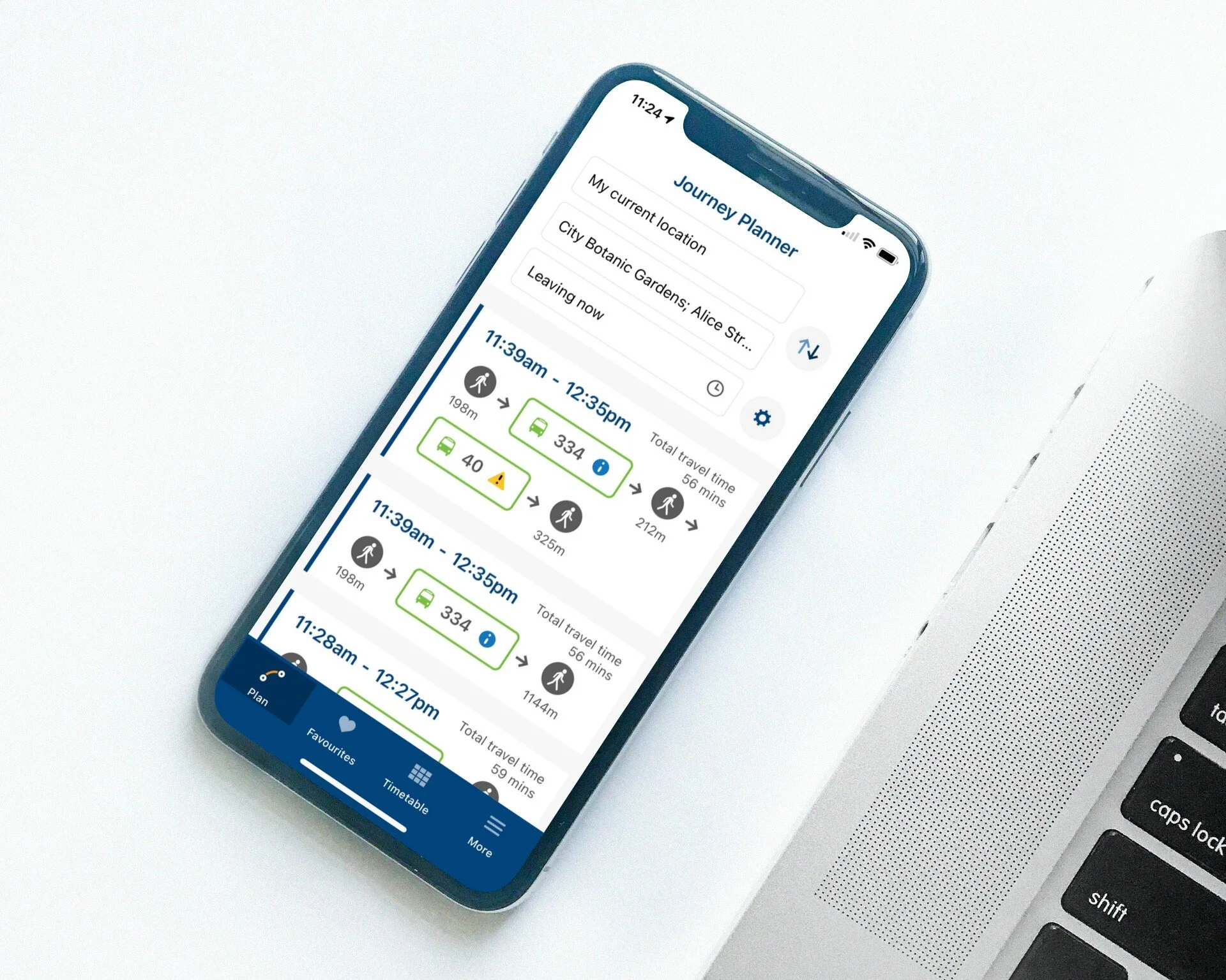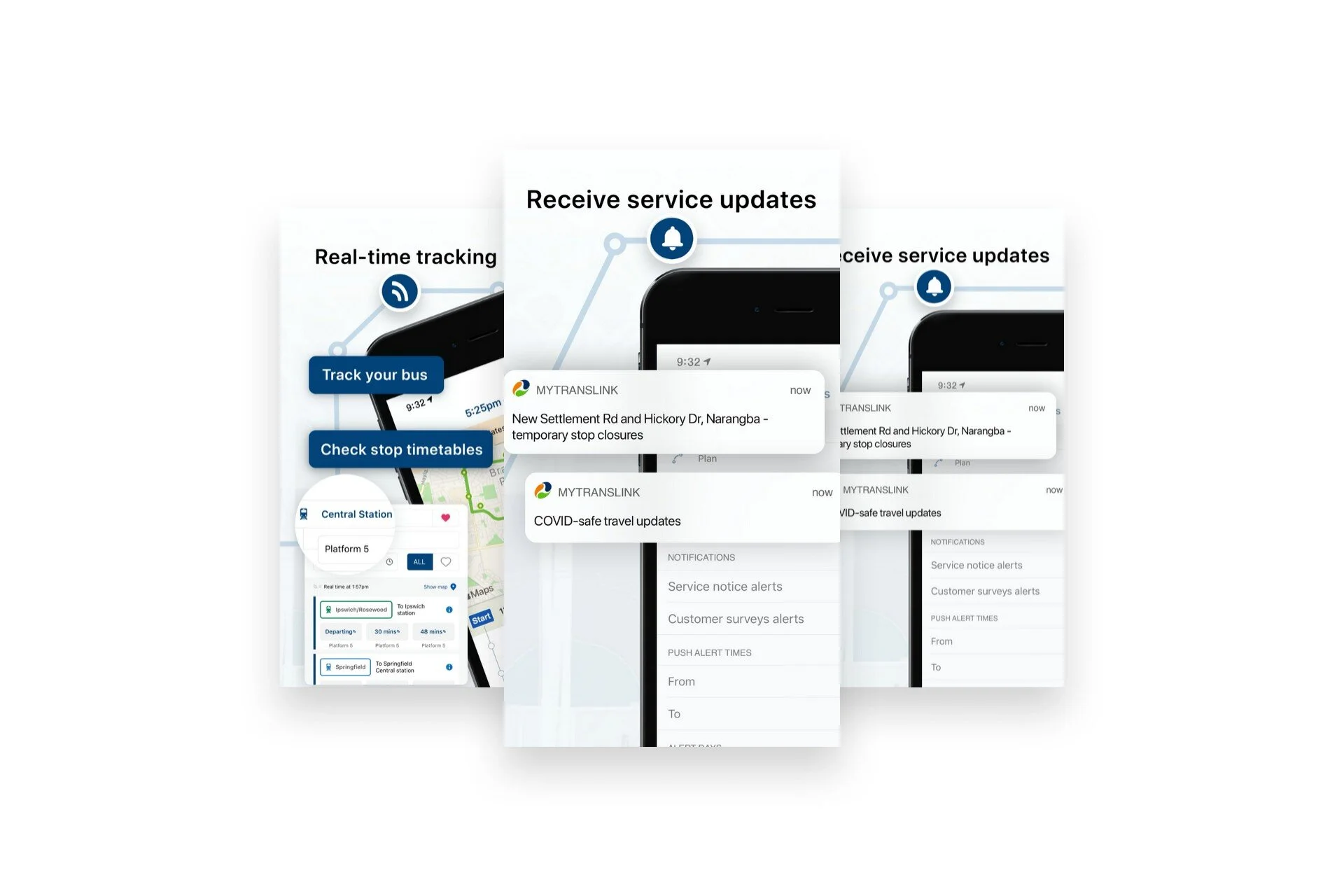Journey planning
TransLink mobile app was operating as a mobile website with data feeds, using an experience that was not meeting the needs of customers. The goal was to build an API, using an API platform that supported the now and into the future, as well as delivering a customer experience that gave customers the information they needed, in a way they want it and at the time they need it.
My role was to manage the team of developers building the app and website as well as content/publishers. It was important the team trusted me and they had a voice in how we went about designing, building and delivering the app at the same time i needed to influence more testing with customers and testers. Using Jira and agile methods we went about designing, building and delivering on the app, it became apparent to me that we had a gap in front-end development capability and was able to fill this gap with additional resources.
Using a panel of experts, we designed an experience that was simple to use and was supported across all devices and platforms. My thinking was as soon as we build, we test, so out on the transport network we would go, testing the experience with customers and getting feedback for the next iteration.
At times the experience we had designed on paper just wasn’t going to work on a mobile device, so we went back to the drawing board and lent on the experts who re-framed the problem and came up with new tested screens.
The app has features like your favourite stop, services and destinations, real-time tracking, notifications about service updates and accessibility options.
The native app went live in 2017 and continues to be used today.


